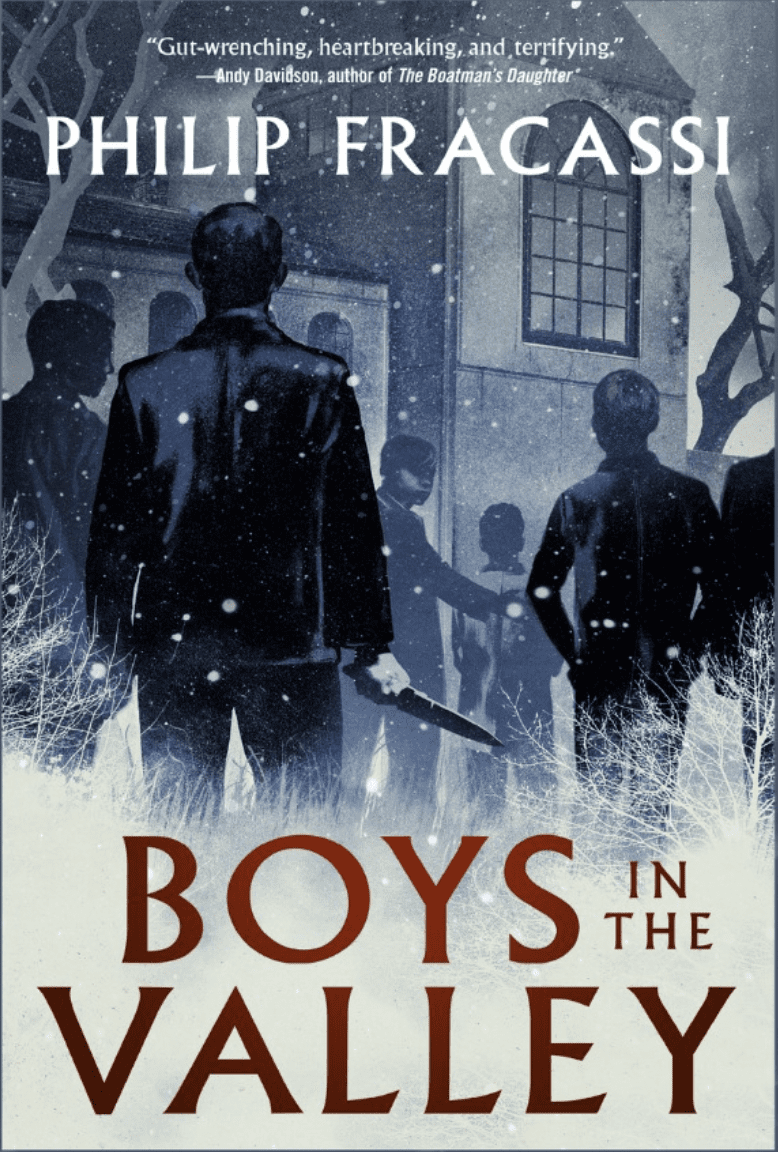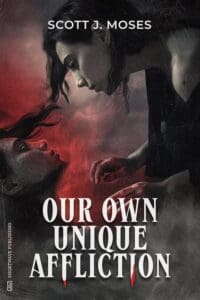
Synopsis
St. Vincent’s Orphanage for Boys.
Turn of the century, in a remote valley in Pennsylvania.
Here, under the watchful eyes of several priests, thirty boys work, learn, and worship. Peter Barlow, orphaned as a child by a gruesome murder, has made a new life here. As he approaches adulthood, he has friends, a future… a family.
Then, late one stormy night, a group of men arrive at their door, one of whom is badly wounded, occult symbols carved into his flesh. His death releases an ancient evil that spreads like sickness, infecting St. Vincent’s and the children within. Soon, boys begin acting differently, forming groups. Taking sides.
Others turn up dead.
Now Peter and those dear to him must choose sides of their own, each of them knowing their lives — and perhaps their eternal souls — are at risk.
Review
Based on the ever-growing stack of Philip Fracassi books that sit on my desk, it feels nearly criminal that I’ve waited this long to read one of his books. The hype around his novels is very real, though, with Boys in the Valley being no exception. Set in a Catholic orphanage for boys, this novel chronicles the events that unfold after an unexpected visitor arrives on the doorstep of St. Vincent’s Orphanage for Boys. The ramifications of the mere presence of such an evil are equal parts malevolent and unrelenting for the boys of St. Vincent. Told with compelling reverence, Fracassi spins a tale of the damned as it battles the light.
Boys in the Valley opens with a brutal scene of violence that involves one of the main characters, Peter. Right off the bat, we are thrown into the perspective of the boys in the orphanage, all there for some reason of loss or abandonment. Things don’t particularly seem to get better for any length of time in this novel as the orphanage must ration their food into measly portions resulting in many of the boys starving. On top of an already bleak situation, Father Poole rules with an iron fist over this group of boys and is unafraid to issue corporal punishment by sending boys to what is known as “the hole.” You can about imagine what that entails, and your imagination would be correct. To balance this leading force of Old Testament, fire-and-brimstone leadership, Fracassi introduces Father Andrew to the story, a man who is Peter’s mentor in preparing him for possibly joining the priesthood.
In many ways, this novel shines for the character work at play within an already action-packed, dramatic plot. This dynamic leadership exemplified by both Father Poole and Father Andrew was truly intriguing in the face of an evil entity set on causing physical pain and suffering. Even more interesting to observe is the relationships between each boy in the orphanage and the natural leader position Peter assumes. Each boy carries a name of biblical significance (such as David, Peter, and Simon) that I’m still contemplating nearly a week after reading this book.
Beyond those obvious layers and relations to religion and faith, a deeper examination of what constitutes evil is the greatest selling point of this novel. Fracassi can beyond a doubt write mean, bad, and ugly characters and situations; however, I am not referencing the literal demons that eventually plague the orphanage. Father Poole’s use of physical punishment with no room for leeway or grace is one of the most horrifying, lasting effects of Boys in the Valley. The unforgivable inhumanity present in his actions and treatment of the boys is everything the orphanage, rooted in Catholicism, should be against. Yet, he remains the main man in charge. Most infuriating of all was his treatment of a particular death, his insistence on it being a suicide and unforgivable in the eyes of God. David’s confession to Peter towards the end of the novel only solidifies this idea that evil comes in various forms.
“That place…That was my hell.”
In a rather tragic turn of events, Fracassi delivers a devastating blow in his conclusion of the novel, one that will not be soon forgotten. As mentioned in the introduction by Andy Davidson, this story had the real potential to fly off the rails into a thing of untasteful horror. However, Philip Fracassi navigates the unruly waters of St. Vincent’s orphanage with grace, reverence, and tact. There is no shortage of bloodshed and gruesome violence, but the lasting impact of this story is one of hope and grace. The love and bravery exemplified by the boys of the orphanage carry a large emotional weight mostly through their resilience and determination to survive such a horrific set of events and circumstances. As I mentioned before, my stack of Fracassi novels looms high on my shelf, and it is my belief it will only grow higher.









Leave a Reply